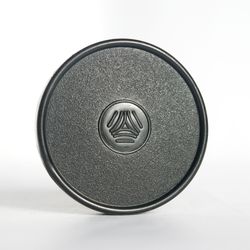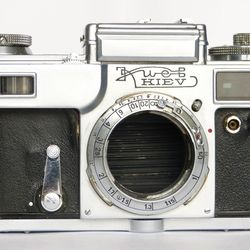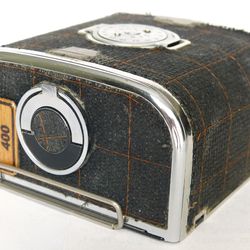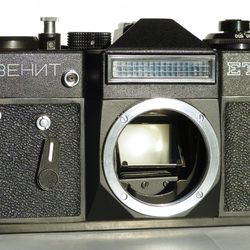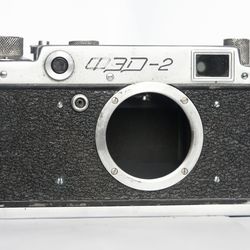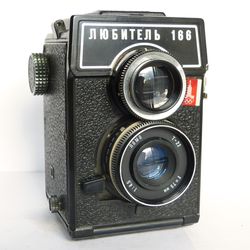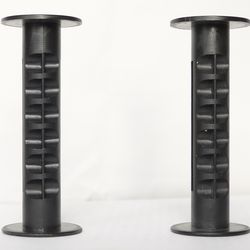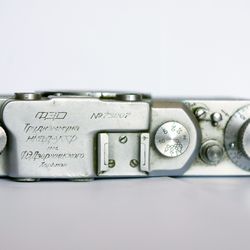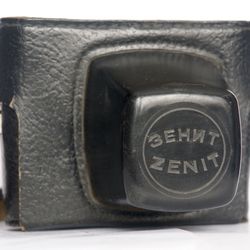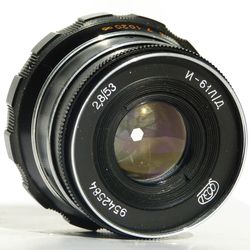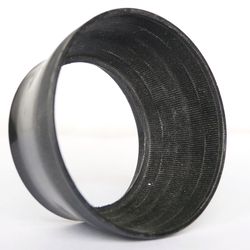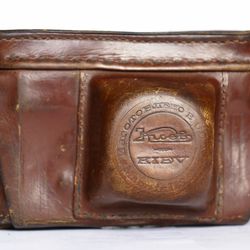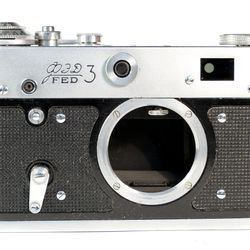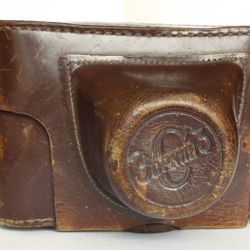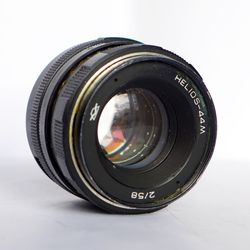Lubitel medium format TLR 6x6 LOMO USSR lens T-22 4.5/75 for parts
Quantity
Lubitel,
Soviet medium format film TLR camera
with lens T-22
6x6 cm (120 film format), #52107192,
LOMO, Leningrad, USSR
Most likely, for parts. Shutter is fully working. Focusing screen and shaft are absent. Focusing lens has microdust. Main lens has microspecks of microdust inside. Body has chips (see the photo). Body has signs of age and use. No take-up spool is included.
History of the camera
Here I offer Soviet Twin-Lens Reflex camera (TLR) "Lubitel". It was produced by LOMO plant (Leningrad, USSR) since 1950 till 1956 LOMO in 1 361 100 pieces.
TLR means that such camera has two lenses: upper lens is used for aiming (to estimate the borders of frame) and focusing, there is a mirror fixed at an angle of 45 degrees. This mirror reflects the light from the upper lens upwards. Lower lens is used to directly for taking photo. Shutter is located in lower lens. Both lenses are coupled with pinion (see the first picture).
To focus you rotate the upper lens and watch from above into the waist level finder. The only feature is that the image will be inverted from left to right. As the lenses are linked, the lower lens will rotate and focus too.
Also, you can use front panel of waist level finder as a simple frame viewfinder to estimate the frame borders only. Focusing is performed with distance numerals on the upper lens (1,3 - 1,5 - 2 - 2,5 - 3 - 5 - 10 - Infinitiy). Thus the camera will become scale-focused.
Comparing with medium format SLR cameras, TLR is simplier (because mirror is fixed), smaller and are more light-weight. On the other hand, it's much more difficult to create changeable lenses for TLR ("Lubitel" family does not have it, but for example "Mamiya C220" has a line of option optics). Zoom lenses cannot be used. Parallax is not compensated (images of the upper and lower lenses will not coincide a bit). Depth of focus can't be estimmated.
TLR scheme was usually used for small simple medium format cameras with non-removable lenses. "Lubitel" is a typical representative. "Lubitel" is translated into English as "amateur".
USSR engineers were inspired by German "Voigtlander Brilliant". In 1946-51 first Soviet TLR "Komsomolec" was produced by LOMO since 1946 till 1951, made 306 743 pieces. It was a scale-focused camera: upper lens could not be used for focusing, but for aiming only. Focusing was done with distance numerals on the upper ring.
In 1950 "Lubitel" was introduced. This TLR got a possibility of focusing with upper lens. And in 1955 "Lubitel-2" changed previous model. Cameras are the same, but "Lubitel-2" got a self-timer and cable synchrocontact for flash. In 1955-79 totally 2 232 245 pieces of "Lubitel-2" were produced.
"Lubitel" has two lenses. Upper is 2.8/60, has one lens, focusing is with removable waist-level finder to the dim glass. There is a removable magnifier inside the shaft. Minimal distance of focusing is 1,3 meters. If special nozzle lenses are used, minimal distance of focusing can be reduced. Waist level finder can have flank and rear light-protective metal curtains removed and used a frame viewfinder.
A small hint: there are red dots on the distance scale of the upper lens (between 5 and 10 meters) and at the aperture scale of the lower lens (between f/8 and f/11). If you set the pointing arrows at these red dots, camera will be focused at hyperfocal distance. All the objects farhter than 3-4 meters will be sharp. Since that distance parallax can not be taken into consideration.
Lower lens is "Triplet T-22", 4.5/75, has 8 aperture blades, with one-layered anti-reflection coating. This lens is used in all "Lubitel" models. Aperture range is f/4.5-22. There is shutter cocking lever (button), shutter release lever (button), remote cable carving, shutter speed disc and aperture setting lever. Shutter "ZT-5" is central, has 3 blades.
75mm is approximately equal for 40mm focal distance at usual 35mm film.
Possible shutter speeds are: 1/10, 1/25, 1/50, 1/200 sec and B. In 1959 shutter speeds were remarked as: 1/15, 1/30, 1/60, 1/250 sec and B. Shutter speed must be set before cocking the shutter.
Camera uses 120 film which gives 12 frames with size 6x6 cm. Shutter cocking and film rewind are not connected and made separately. For controlling film rewind there is a round window on the rear side with red colour filter. This window is closed with a screen that is removed with a near knob. 120 film has a paper layer with frame borders which are visible inside that round window.
On the left side there is a film rewind barrel, which rotates clockwise only. On the right side there is compartment for two filters. On the upper part except the waist-level finder there are rings for the strap and two locks of the rear cover.
On the bottom there is a 3/8" tripod socket.
Body is plastic.
When opened rear and bottom parts of the camera are reclined, opening two nests for take-up spools. Lower nest (at the bottom) is used for film, rear nest (at the rear side) is for receiving take-up spool. It's unlocked with film rewind barrel. Backwind is not possible.
On the base of "Lubiter(-2)" cameras were designed and produced by LOMO:
- "Sputnik", stereo TLR, with three lenses, 84063 copies were made in 1955-73;
- "Neva", with lens "Industar-6", 4/75 and metal body. Some hundred cameras were produced in 1955-58;
- "Lubitel-166", film rewind and shutter cocking are blocked, frame counter is introduced, hot shoe appeared instead of cable synchrocontact, self-timer disappeared. Metal body. Upper lens is 2.8/75. 69120 copies were made in 1976-81;
- "Lubitel-166B", similar to "Lubitel-2" in new body. Upper lens is 2.8/75.906 248 copies were made in 1980-90;
- "Lubitel-166U", the same is "Lubitel-166B" but can make films 6x6 or 6x4.5 cm. 412 187 copies were made in 1983-96.
- "Lubitel-166+ Universal", the same is "Lubitel-166U", has an adapter for 35mm film. Produced even nowadays in small numbers.
Camera was exported abroad and could had its name in Cyrillic or Latin fonts. Some cameras got a new names: "Amator", "Global 676", "Kalimar TLR100".
Characteristics:
S/number - 52107192
Frame size - 6x6 cm (120 film format).
Shutter speeds - 1/10-1/200, B.
Body - plastic
Upper lens - 2.8/60, one lens
Lower lens - "Triplet T-22", 4.5/75
Dimensions (length*width*height) (mm): 89*95*124 (in transport position)
Mass - 414 g


























